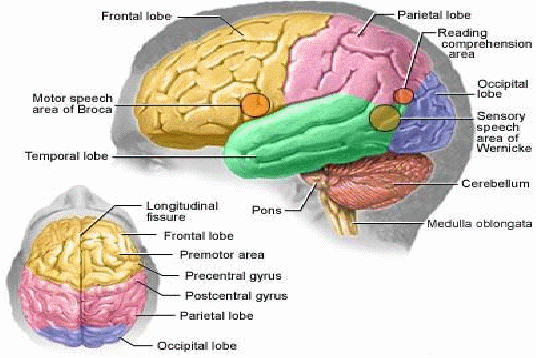The Brain
The brain consists of about 100 billion cells, mostly neurons. A neuron is basically an on/off switch just like the one you use to control the lights in your home. It is either in a resting state (off) or it is shooting an electrical impulse down a wire (on). It has a cell body, a long little wire (the "wire" is called an axon), and at the very end it has a little part that shoots out a chemical. This chemical goes across a gap (synapse) where it triggers another neuron to send a message. There are a lot of these neurons sending messages down a wire (axon). Each of these axons is generating a small amount of electrical charge; this total power has been estimated to equal a 60 watt bulb. Measuring this electrical activity can tell how the brain is working. A device that measures electrical activity in the brain is called an EEG (electroencephalograph).
Each of the billions of neurons "spit out" chemicals that trigger other neurons. Different neurons use different types of chemicals. These chemicals are called "transmitters" and are given names like epinephrine, norepinephrine, or dopamine.
Each part of the brain is speciialised for a different task. One part controls speech, another controls sight, another controls movement etc. This is illustrated below.

If one part of the brain is injured, then certain functions may become impaired. A person may not be able to control movement, or hearing for example. This is a result of different parts of the brain being specialised for certain things. Other parts of the brain can be trained to carry out these function. This is called therapy.